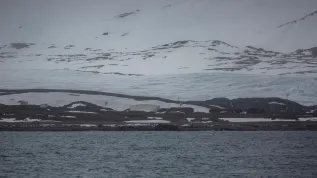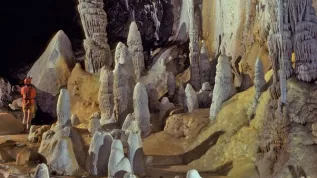
Through slow but constant erosion, water shapes the surface of the earth, carving in soluble rocks. An international team with the participation of Polish researchers found that a record of climate history is preserved in the shapes of vertical channels in limestone rocks, called karstic solution pipes.
Research by scientists from the Faculty of Physics of the University of Warsaw, the University of Florida and the Institute of Earth Sciences in Orleans - published in the journal Physical Review Letters - shows that over time, these pipes evolve into an invariant shape, an ideal form that remains unchanged as the pipes deepen, encoding ancient rainfall patterns, we read in the press information sent by the Faculty of Physics of the University of Warsaw.
According to the release, the team used microfluidic experiments to mimic this process in a lab and observe water carving channels within gypsum-lined cells.
'From a chaotic start, only a few channels survived, each settling into a stable, invariant shape that grew deeper without changing form. This mirrors the behaviour of karstic pipes in nature', says Stanisław Żukowski, a doctoral candidate at the Faculty of Physics of the University of Warsaw and Université Paris Cité.
Deriving the mathematical formula for this shape was a big challenge for researchers. 'Capturing the invariant form required sophisticated mathematical tools, blending fluid dynamics and reactive transport. This allowed to model how groundwater, driven by rainfall, shapes these pipes', says Professor Piotr Szymczak from the Faculty of Physics, University of Warsaw, the corresponding author.
'The formula reveals how heavy precipitation accelerates groundwater movement, forming elongated pipes that record in their shape past rainfall conditions', the researchers describe.
The authors of the publication emphasise that understanding these patterns is also crucial for predicting how water moves through underground reservoirs, which has practical implications, from groundwater management to CO₂ storage and even oil recovery.
'This study is part of a broader effort to understand how simple physical laws give rise to complex natural structures. Just as snowflakes and river deltas follow mathematical rules, so too do the silent, hidden processes of rock dissolution. The discovery of an invariant shape for dissolution fingers is a step toward deciphering nature’s secret blueprint, one drop of water at a time', we read in the release.
The study was financed with a grant awarded by the Polish National Science Centre. (PAP)
akp/ agt/













